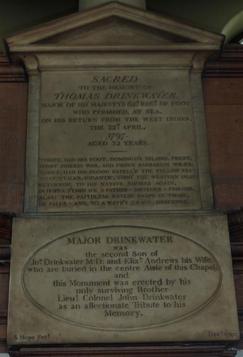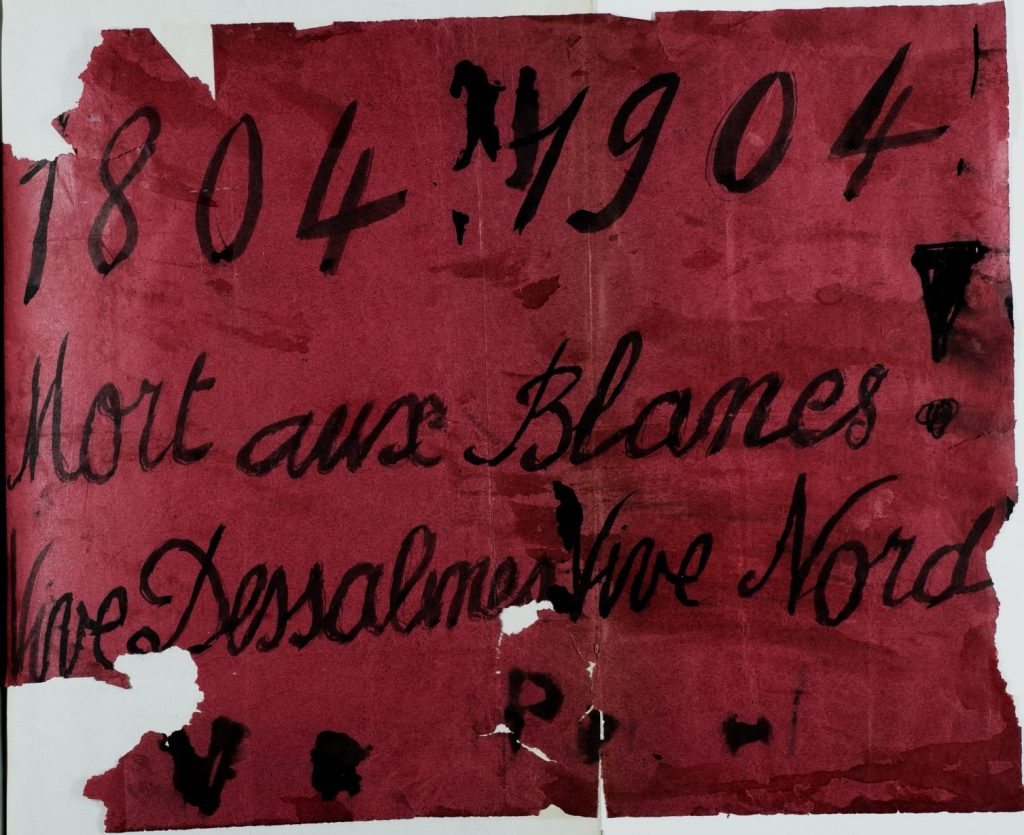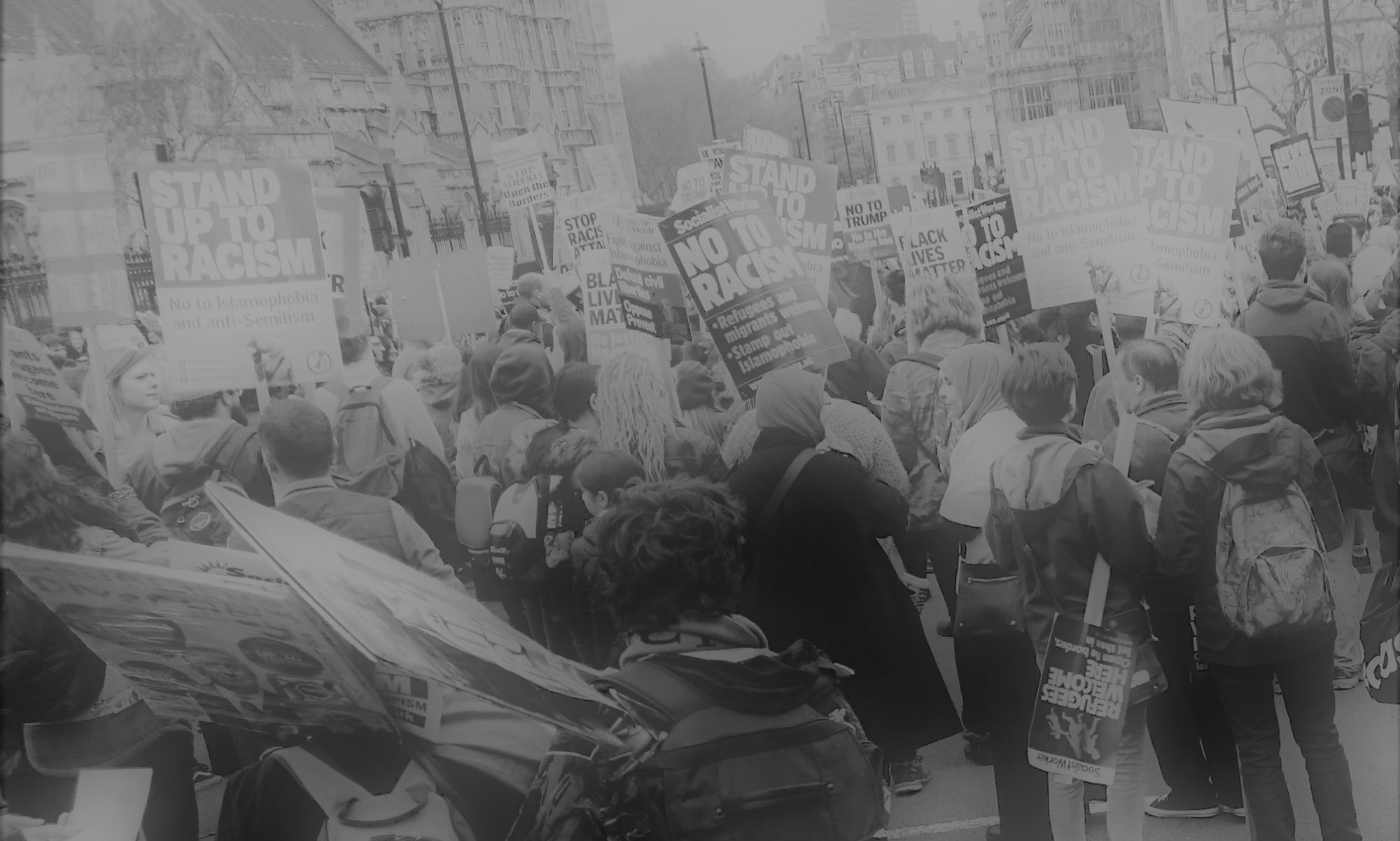By Jack Webb
In 1822, James Butterworth, a topographer, published an account of his visit to the Trinity Church in the sleepy, but industrialising town of Salford. He was struck by the respectability and cleanliness of the place, a credit to the townspeople who kept it. Inside the building, there was a handsome organ, the arms of England and, beyond that, a white marble arch which bore an inscription. It read:
Sacred to the Memory of
Thomas Drinkwater,
Major of his Majesty’s 62d REGT of foot
Who perished at sea
On his return from the West Indies
Thrice had his foot Domingo’s island prest [sic],
Midst horrid wars and fierce barbarian wiles;
Thrice had his blood repelled the yellow pest that stalks,
Gigantic through the Western Isles,
Returning to his native shores again,
In hopes tembrace [sic] a father — brother — friends
Alas! The faithless ratlin [sic] snaps in twain
He falls — and to a watery grave, descends.
(Butterworth 1822, pp. 95–96)
In this quiet English town, in a building that was at the heart of public and spiritual life, lay a monument to a history otherwise largely forgotten; a history of Anglo–Haitian relations. Such a history blows wide open any notion that Britain’s nineteenth century was one of imperial might and expanding control over vast swathes of the world. Instead, from the perspective of Haiti’s Black sovereignty, we gather a decolonised vision of the British Empire, one in which we see the fragility and even failure of White colonial projects.

The testimony in Trinity Church told its viewers of the British invasion of Haiti, during the country’s revolution and wars of independence (1791–1804). The enslaved in that territory had risen up against the French colonists and enslavers, initially to fight against the conditions of enslavement, and then to overthrow the system itself. As the revolution grew, the French lost control of the territory. Spain and Britain attempted to invade and annex what had been the most profitable regime of plantation enslavement on the planet. Here is where Drinkwater, and the inscription, become relevant. Like so many of his compatriots, 14,000 to be precise, or one third of the British forces, the Major’s life was lost in this failed project of invasion and re-enslavement. The self-emancipated in Haiti, under the banner of Toussaint Louverture, would go on to defeat the British, the Spanish and also Napoleon’s elite army that he assembled to take back the colony. In 1804, Jean Jacques Dessalines, now leader of the Haitian Revolution, declared independence, creating the world’s first Black sovereign nation–state.
The story of Haiti and Britain does not, though, end here. Far from it. In the nineteenth century, Britain would become the most aggressive colonising force in the world; a project premised on ideas about British exceptionalism, racial supremacy and the need to colonise in order to civilise those ‘barbaric’, to use the terms of Drinkwater’s inscription, peoples of the world. Haiti’s own trajectory would be one of maintaining its fragile status as a Black, independent and sovereign nation in a hostile, ever-more imperialist world. It would seem, then, that Haiti and Britain would enter a relation of opposition and conflict in which the might of the British Empire came up against Haitian resistance. Such power imbalances were surely crucial to interactions between subjects of the two countries. But there was also a more dynamic set of relations in which Haitians intervened in the British imperial project, as much as British imperialists threatened Haitian sovereignty.
If we fast-forward nearly 100 years after the Haitian Revolution, and Drinkwater’s untimely demise, we see British travellers and Haitian political figures, and the broader population, entering discourse over the meaning of the Revolution, and of Haiti’s Black sovereignty. These deliberations did not only have existential implications for Haiti, but also for a British Empire that had recently colonised vast swathes of the African continent. If Haiti was to illustrate that people of African descent could, so the logic ran, ‘progress’, form a nation state, and even achieve ‘civilisation’, then there was less of a need for British intervention. When Hesketh Vernon Prichard visited Haiti in 1900 and wrote up his account as a travel narrative, and as a series of articles in the newly formed popular press, the Daily Express, he was at pains to emphasise how this nation, and its state, had got it all wrong. Chief amongst Prichard’s complaints was the Haitian adoration for its revolutionary hero, Jean Jacques Dessalines, rather than that other, supposedly exceptional, figure of Louverture:
In Toussaint [Louverture], you have a man whose bond, whose acts of mercy are the sole bright episodes against one of the darkest backgrounds of history… The many tales of his acts of generosity, no one of which militated in any degree against the cause of Haytian liberty, are legion.
Over and against him stands a far different figure, that of General Dessalines, who spared no man in his anger and no woman in his lust, who was corrupt and venal to an unheard of degree … Today, in Hayti, which of these two men is the national hero? It is Dessalines.
And the act upon which his fame chiefly rests is the barbarous decree issued by him for the massacre of every living French soul, man, woman and child.
(Prichard 1900, pp. 279–80)
Although the accusation does not hold true, Dessalines was, for British commentators throughout the nineteenth century, the ‘corrupt’ and ‘venal’ leader who massacred all foreigners in Haiti during the Revolution. The fact that Haitians extolled his memory demonstrated to people like Prichard their complete lack of capacity for any sort of proper government. In turn, this played into imperial fantasies about people of African descent beseeching domination, and British leadership. On the face of it, then, it would seem that Haiti’s attempt to construct a nation–state was undermined as it was instrumentalised in the British imperial project.

However, Haitians did not only defend their right to sovereignty, but in continuing to celebrate Dessalines, they threatened some of the founding myths of the British Empire. Haitian President Nord Alexis, Prichard’s contemporary, evoked the national hero when he rallied Haitians to the cause of a united Haitian patriotism. In a speech printed in the national paper Le Nouvelliste, he declared, ‘let us remember that we are one people and that we represent one race. We must not fail at this dual task that Dessalines assigned to us: to be a people and to represent a race’. This hero of the Revolution was instrumentalised by observers like Prichard to argue for the pressing need for the British to rule over people of African descent; but he was also deployed by Haitian political elites to augment Haitian national unity and patriotic duty. In this latter case, Dessalines continued to haunt the British imperial project as he was seen to emphasise the vulnerability of the British interventions in the Caribbean, and the fallibility of imperial and racial justifications for colonisation.
A decolonised historical method can take many forms, but at heart it is concerned with recovering the experiences, thoughts and ideas of those maligned in imperial accounts and occluded from the colonialist historical record. It is concerned, as a matter of justice, with recognising the intellectual wealth and historical contribution of global majorities to local, national and world pasts. Such a method also improves exponentially any historical understanding of the given subject as it pays critical attention to the complexities of a multitude of viewpoints rather than dwelling only on the writings of imperial agents. British history, for instance, seen from the viewpoint of Haitians and many other people across the Caribbean and African contexts, becomes not only a story of oppression and violence, but also of fragility. Haitians resisted the cultures of imperialism and, much more than this, helped to shape its cultural, political and diplomatic trajectories.
References
Butterworth, James. (1822) Antiquities of the Town and a Complete History of the Trade of Manchester. Manchester: CW Leake.
Prichard, Hesketh Vernon. (1900) Where Black Rules White: A Journey Across and About Hayti. Westminster: Archibald Constable.
[Jack Webb is Research Associate in Postcolonial Print Cultures in the School of English, Newcastle University. His monograph, Haiti in the British Imagination: Imperial Worlds, 1847–1915 was published with Liverpool University Press in November 2020. In August, he will take up a lectureship in Modern British History at the University of Manchester.]






